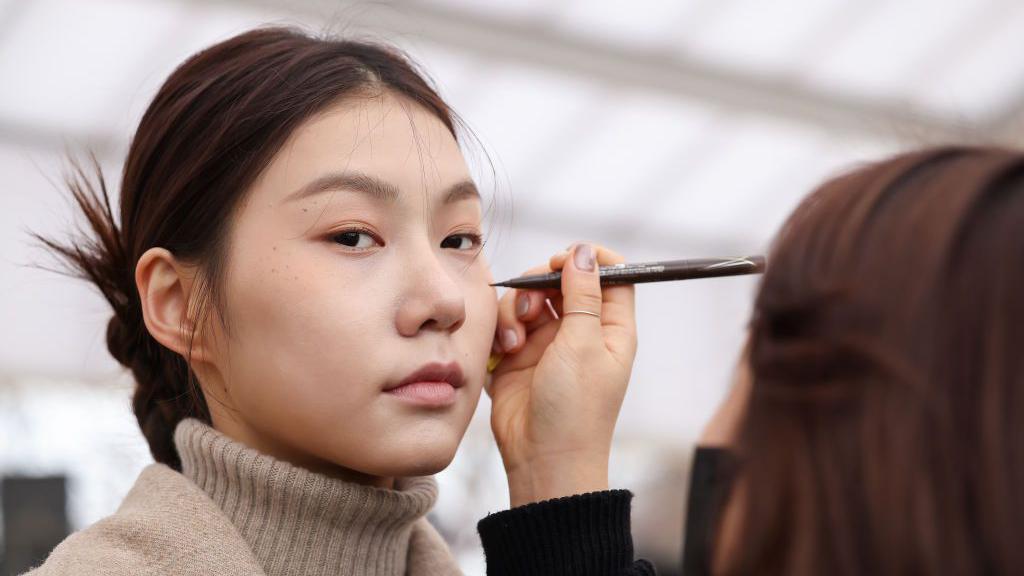
The surging popularity of South Korean beauty products, often referred to as "K-beauty," has taken the United States by storm. From skincare to makeup, these products are celebrated for their perceived quality and value, leading to a significant increase in demand in recent years. But now, new tariffs are threatening to disrupt the booming industry.
The Allure of K-Beauty
The global wave of South Korean culture has undoubtedly contributed to the increased popularity of its cosmetics. Many consumers find K-beauty products to be a more suitable option for their skincare needs compared to Western brands. One consumer notes that South Korean serums work better for her skin, finding some Western alternatives too harsh. She now uses K-beauty products for almost all of her skincare routine.
This preference is widespread. In 2024, Americans spent an estimated $1.7 billion on K-beauty products, marking an impressive increase of over 50% compared to the previous year. Beyond the perceived value, K-beauty products often feature unique ingredients not commonly found in Western cosmetics, such as heartleaf and snail mucin, further fueling their appeal.
Tariffs Cast a Shadow
The imposition of a 15% import tax on South Korean goods by the U.S. government has introduced uncertainty into the K-beauty market. While lower than the originally threatened 25% levy, consumers and retailers alike are bracing for potential price increases.
One K-beauty retailer reported a nearly 30% surge in orders immediately following the announcement of the import taxes. The founder of the retailer notes that customers were proactively planning how to navigate the potential impact of the tariffs.
Another K-beauty retailer has been proactively increasing its product orders since the tariff threats began. Managers at the store received alerts from suppliers urging retailers to stock up before the tariffs take full effect.
Price Hikes Loom
Retailers anticipate that the prices of K-beauty products are likely to rise as the tariffs increase costs across the supply chain. Experts suggest that anyone expecting prices to remain stable in the near future may be mistaken.
An economist at the University of California San Diego suggests that prices are inevitably going to increase, particularly for smaller sellers operating on platforms like Amazon who typically have smaller profit margins. Despite the impending price hikes, experts believe that the global popularity of South Korean culture will sustain demand for K-beauty products in the U.S. market. While more casual buyers might be deterred by higher prices, dedicated fans are unlikely to easily find suitable substitutes.
Retailers agree, anticipating that customers will still purchase K-beauty products, though potentially in smaller quantities due to increased costs. One consumer says that she is willing to pay more for her preferred products, depending on the extent of the price increase.
Winners and Losers
Larger K-beauty brands are better positioned to absorb the costs associated with the tariffs compared to their smaller counterparts. These larger companies, with their higher profit margins, may be able to avoid significant price increases for their customers. However, smaller K-beauty firms that manufacture their products in South Korea will face challenges in maintaining their current pricing.
According to business consultants based in South Korea, the impact of the tariffs will take time to fully materialize, as many goods currently being sold were commissioned at pre-tariff prices. However, the effects are expected to become apparent soon.
A Level Playing Field?
The U.S. government has recently reached agreements with Japan and the European Union, subjecting their exports to the same 15% tariffs as South Korea. This means that countries that are home to some of the world's largest cosmetics brands now face similar levies as the K-beauty industry.
A central tenet of the government's trade policies is to encourage increased domestic production. However, it remains to be seen whether these tariffs will lead U.S. buyers to switch to American-made beauty products.
Some consumers suggest that they do not see U.S.-made products as viable alternatives. Despite actively searching for American-made options, they have yet to find any that are as effective as their current K-beauty products. Therefore, they are unlikely to switch to American products at this time.
The Enduring Appeal
Beyond the ingredients and formulations, the appeal of K-beauty is also tied to broader cultural trends. The rise of Korean pop culture, fashion, and entertainment has introduced a new aesthetic sensibility to the West. This includes an emphasis on "soft masculinity" and "flowerboy" images, which are often promoted by K-beauty brands. This unique approach to beauty and self-care resonates with a growing audience seeking alternatives to traditional Western ideals.
Post a Comment for "Trump's Tariffs Crush K-Beauty"